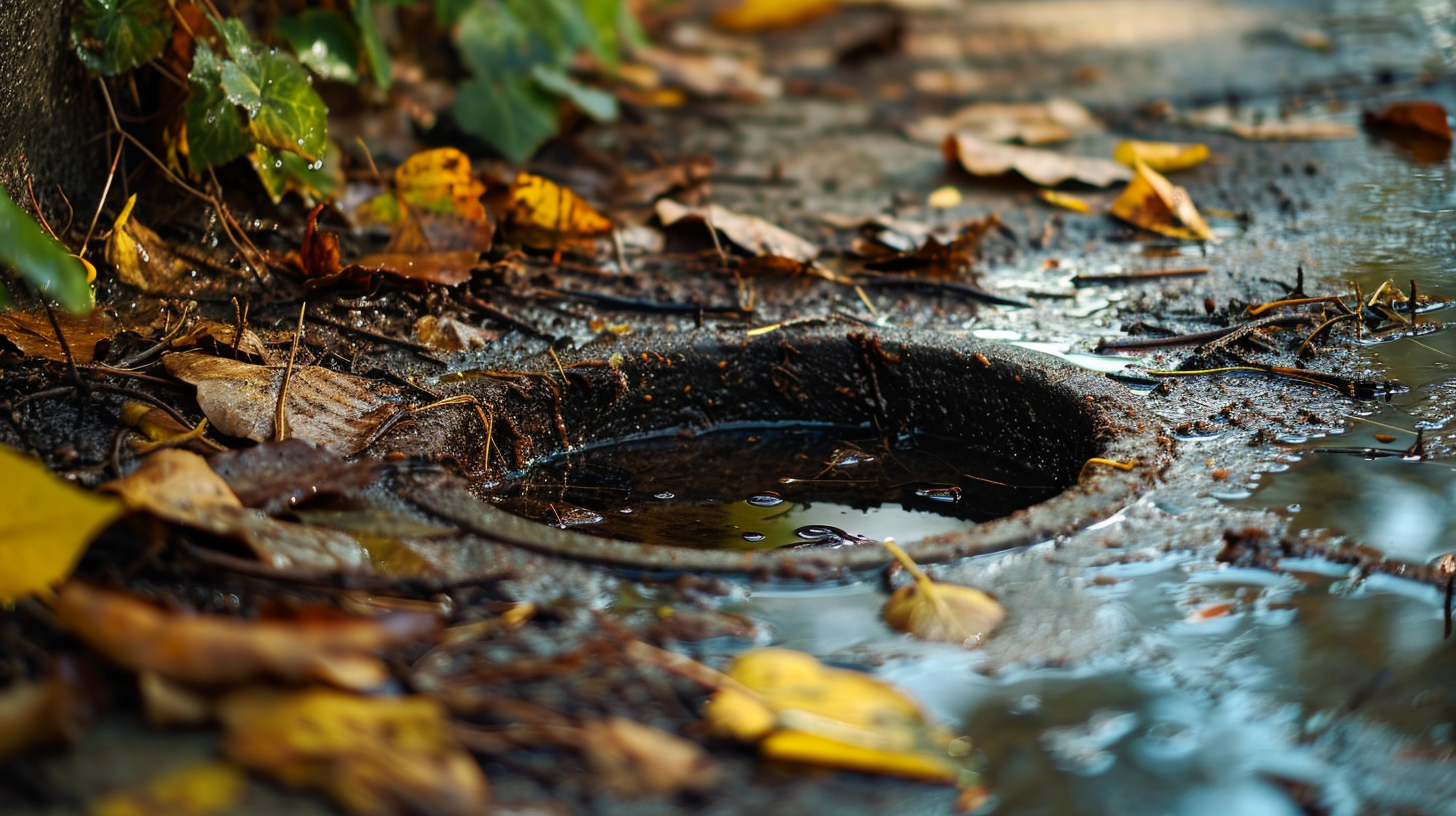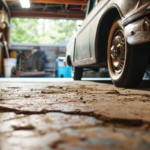Last Updated on 24th December 2023
Clogged drains can be a frustrating and inconvenient problem to deal with. Whether it’s a kitchen sink, bathroom drain, or shower, this article provides practical solutions to effectively repair and clear clogs. From identifying the cause of the blockage to utilizing natural remedies and using a plunger, readers will learn step-by-step methods to restore proper drainage. Additionally, valuable tips for preventing future clogs and maintaining a healthy plumbing system will be shared.
Identifying the Cause of the Clog
The plumber carefully examined the drain pipe to determine the cause of the clog. Identifying the cause of a clogged drain is crucial in order to implement the appropriate repair method. There are several common signs that can help determine the cause of the clog. Slow drainage, gurgling sounds, and foul odors are all indications of a clogged drain. These signs can be caused by various factors such as hair, grease buildup, or foreign objects blocking the pipes. While some minor clogs can be resolved using simple home remedies, more severe clogs may require professional assistance. A professional plumber has the necessary tools and expertise to accurately diagnose the cause of the clog and provide an effective solution. It is important to seek professional help to prevent further damage to the plumbing system.
Gathering the Necessary Tools and Materials
When it comes to repairing a clogged drain, gathering the necessary tools and materials is crucial for a successful outcome. Some essential tools include a plunger, a drain snake, and a wrench for removing traps. Additionally, choosing the proper drain cleaner is important to ensure that it effectively breaks down the clog without damaging the pipes.
Essential Tools for Unclogging
One must have a set of essential tools for unclogging in order to effectively tackle a clogged drain. When it comes to unclogging drains, two essential tools that come to mind are the snake tool and chemical cleaners. The snake tool, also known as a drain auger, is a long, flexible tool that helps in breaking up clogs and removing debris from the drain. It can be inserted into the drain and maneuvered to reach the clog, allowing for easy removal. On the other hand, chemical cleaners can be used as a last resort to dissolve stubborn clogs. These cleaners typically contain powerful chemicals that break down organic matter and clear the blockage. However, it is important to use chemical cleaners with caution, as they can be harmful to both the environment and the plumbing system if used incorrectly. Therefore, having both the snake tool and chemical cleaners in your toolkit will ensure that you have the necessary tools to tackle any clogged drain effectively.
Choosing Proper Drain Cleaner
To effectively unclog drains, it is important to choose the proper drain cleaner and gather the necessary tools and materials. When faced with a clogged drain, many people automatically reach for harsh chemicals that can be harmful to both the environment and our health. However, there are eco-friendly drain cleaner alternatives that can effectively clear clogs without the use of harmful chemicals. These alternatives include natural ingredients such as baking soda, vinegar, and lemon juice. Baking soda can be combined with vinegar to create a foaming reaction that helps break down clogs, while lemon juice can be used to dissolve grease and eliminate unpleasant odors. By opting for eco-friendly drain cleaners, we can maintain clean and clear drains while also protecting the environment.
Removing Debris and Blockages From the Drain
When faced with a clogged drain, it is important to first identify the common causes of blockages, such as hair, soap residue, and food particles. Once the cause is determined, there are various tools that can be used to remove the debris, including a plunger, drain snake, or a wet/dry vacuum. For minor blockages, a DIY drain cleaning solution can be effective, but for more stubborn clogs, it may be necessary to seek professional help.
Common Blockage Causes
The accumulation of hair and soap scum in bathroom drains is one of the most common blockage causes. Identifying blockage signs and troubleshooting drain problems are essential skills for homeowners to have. When it comes to identifying blockage signs, slow drainage is a clear indicator that there is a blockage in the drain. Additionally, gurgling sounds or water backing up in other areas of the house can also be signs of a clogged drain. Troubleshooting drain problems involves using various methods to remove the blockage, such as using a plunger or drain snake. In some cases, chemical drain cleaners may be effective, but it is important to use them with caution and follow the instructions carefully. Regular maintenance and cleaning of bathroom drains can help prevent blockages and keep the plumbing system functioning properly.
Tools for Unclogging Drains
How can homeowners effectively remove debris and blockages from drains using which tools? When it comes to unclogging shower drains or clearing kitchen sink clogs, there are several tools that can be used. One of the most common tools is a plunger. This simple tool creates suction and pressure that can dislodge the blockage. Another tool that can be effective is a drain snake or auger. This long, flexible tool can be inserted into the drain to break up and retrieve the clog. For more stubborn clogs, a drain cleaner or chemical solvent may be necessary. However, it is important to use these chemicals with caution and follow the instructions carefully to avoid damage to pipes or harm to oneself. In some cases, professional help may be required to fully resolve the issue.
DIY Drain Cleaning
Homeowners can effectively remove debris and blockages from drains by utilizing DIY drain cleaning methods. DIY drain maintenance is an important task that every homeowner should be familiar with. It not only helps to prevent clogged drains but also saves money on costly plumbing repairs. There are several signs of a clogged drain that homeowners should be aware of. Slow draining sinks, gurgling sounds, and foul odors are all indicators that there may be a blockage in the drain. To tackle these issues, homeowners can use simple tools such as a plunger or a drain snake to clear the clog. Regular maintenance, such as pouring boiling water down the drain, can also help prevent blockages from occurring. By taking these proactive measures, homeowners can ensure that their drains remain clean and free-flowing.
Using Natural Remedies to Clear the Clog
Although it is commonly believed that chemical drain cleaners are the most effective solution, homeowners can explore using natural remedies to clear the clog. Natural drain cleaners and homemade clog removers can be just as effective, without the harsh chemicals that can be harmful to both the environment and our health. One popular natural remedy is a mixture of baking soda and vinegar. This combination creates a chemical reaction that can break down and dissolve the clog. Another option is using a mixture of salt and hot water, which can help to loosen and flush away the debris. Additionally, a plunger or plumbing snake can be used to physically remove the clog. By using these natural remedies, homeowners can effectively clear their drains while also being mindful of the impact on the environment.
Using a Plunger to Unclog the Drain
To effectively address a clogged drain, one can employ the use of a plunger to dislodge the obstruction and restore proper water flow. However, there are alternative methods for unclogging drains that can be considered as well. For instance, using a drain snake or a mixture of baking soda and vinegar can also be effective in breaking down the clog. Additionally, it is important to emphasize the importance of regular drain maintenance to prevent clogs from occurring in the first place. Regularly flushing drains with hot water, using drain strainers to catch debris, and avoiding pouring grease and oil down the drain can help maintain clear and efficient drainage systems. By implementing these methods and practicing regular maintenance, homeowners can ensure the smooth operation of their drains and avoid costly repairs.
Preventing Future Clogs and Maintenance Tips
Regularly implementing maintenance tips, such as flushing drains with hot water and using drain strainers, can significantly reduce the occurrence of future clogs. Preventing clogs through regular maintenance is essential to keep drains running smoothly and avoid costly repairs. Flushing drains with hot water helps to break down any grease or debris that may be building up inside the pipes. This simple and inexpensive method can be done regularly to prevent clogs from forming. Additionally, using drain strainers is an effective way to catch hair, food particles, and other debris before they enter the drain. By incorporating these preventative measures into your regular maintenance routine, you can ensure that your drains remain clear and free from clogs, saving you time and money in the long run.




